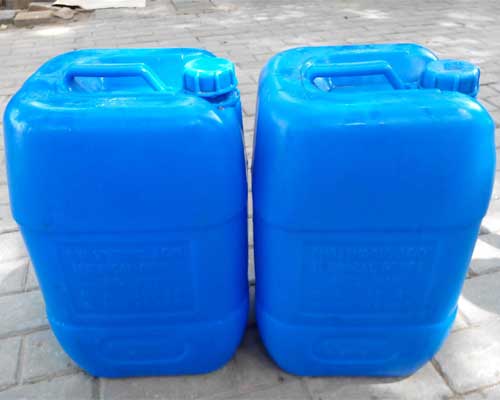There are usually two ways to test the purity of phosphoric acid.
Gravimetric Method
This method is also known as arbitration method. Take 5g of the sample and place it in a 100ml beaker, add 10ml of hydrochloric acid, cover the surface dish. Boil for 10 minutes, then transfer to a 500ml volumetric flask after cooling, add 10ml of hydrochloric acid, make up to volume with water, and shake it well. Take 50ml of this solution and put it in a 500ml volumetric flask, and then make the volume up with water, and shake it up to make the sample solution. Take 20ml of the sample solution and place it in a 400ml beaker, dilute with water to 100ml, add 50ml of quinmolybdenone test solution, cover with a surface dish, heat it on a hot plate until the temperature in the cup reaches 75℃±5℃, keep it for half a minute or Keep it warm in a water bath until the solution stratifies, and rotate 3 to 4 times during the cooling process. Filter with No. 4 glass crucible with constant weight in advance at 175~185℃ (or 240~260℃), filter the supernatant first, and wash the precipitate 3~4 times by decantation, each time about 20ml of water, the washing liquid passes through the crucible Filter, then transfer the precipitate to a glass crucible, continue to wash with water for 5-6 times. Place the crucible at 175~185℃, bake in an oven for 45 minutes, cool the glass crucible in a desiccator to room temperature and weigh.
The phosphoric acid content is calculated as follows: H3PO4(%)=0.04428×(G2-G1)/G×50/500×20/500×100— the amount of sample taken. (G2 refers to the amount of precipitation obtained when measuring the sample. G1 refers to the weight of the sediment measured in the blank.)
Volumetric Method
According to the above gravimetric determination procedure until “cooling process rotation 3~4 times”, the following operation according to the following measurement procedure.
Filter with a filter covered with filter paper, absorbent cotton or pulp, first filter the supernatant, wash the precipitate 3~4 times by decantation, each time with about 25~30ml of water. Then transfer the precipitate to the filter and continue to wash with water until it is acid-free. Transfer the precipitate to the original beaker, add 100ml of carbon dioxide-free water, stir the precipitate, add about 0.5ml/L sodium hydroxide standard solution 10ml, fully stir until the precipitate is dissolved. Add 5 drops of mixed indicator and titrate with 0.25mol/L hydrochloric acid standard solution. The end point is when the solution turns from purple to slightly yellow.
The phosphoric acid content is calculated as follows: H3PO4(%)=c(V1-VV2)×0.003769/G×50/500×20/500×100(c refers to standard solution concentration of sodium hydroxide. V1 refers to the volume of sodium hydroxide standard solution consumed by the sample. V2 refers to the volume of hydrochloric acid standard solution consumed by the sample. V refers to the volume of sodium hydroxide standard solution equivalent to 1M1 hydrochloric acid standard solution in the blank test.)


